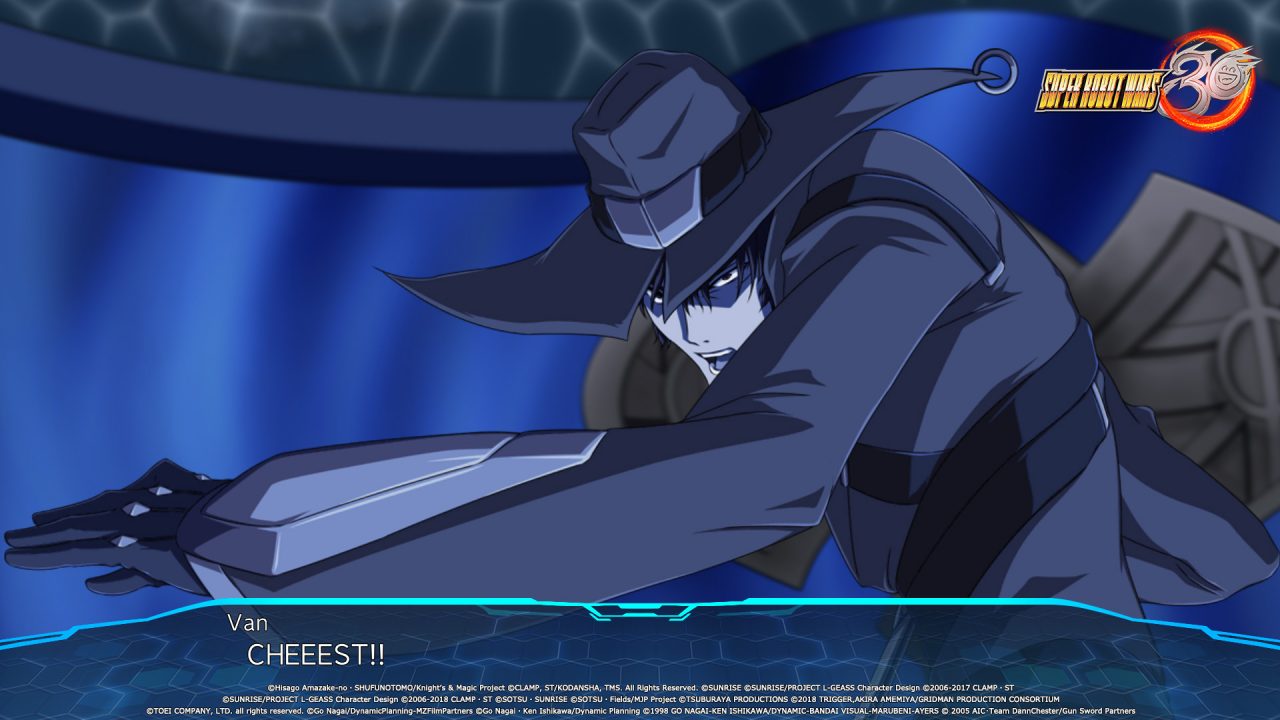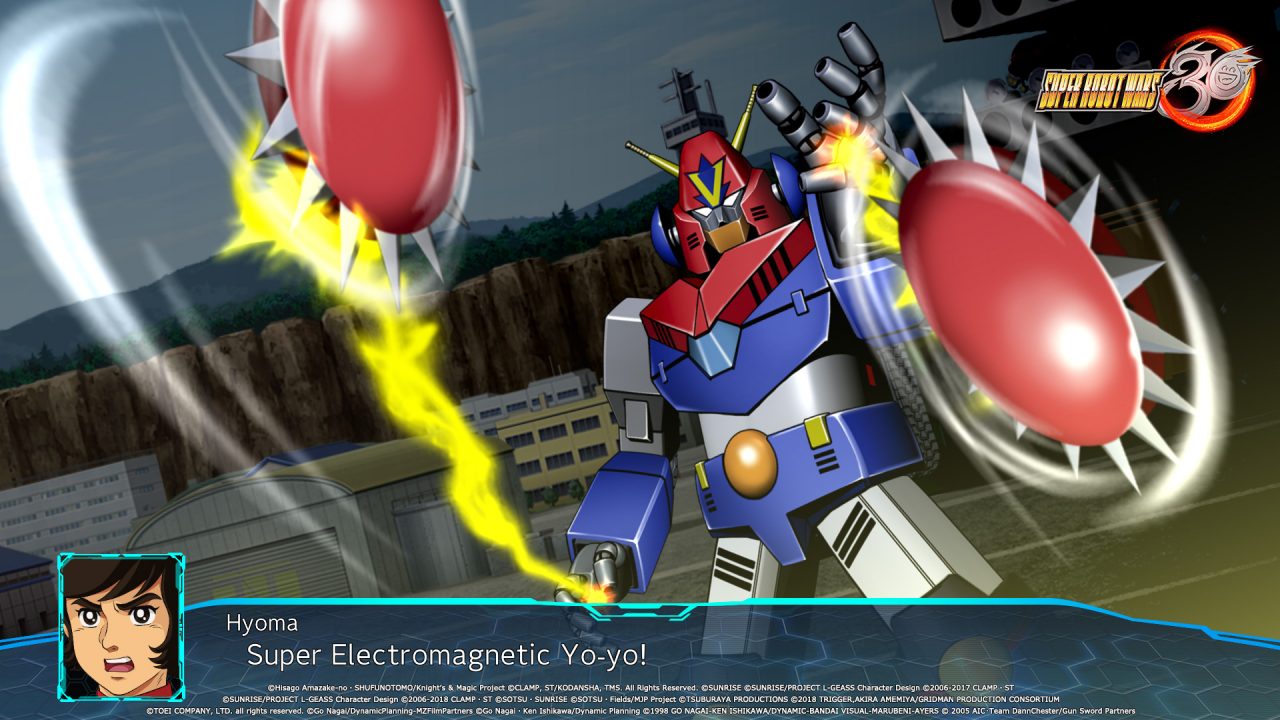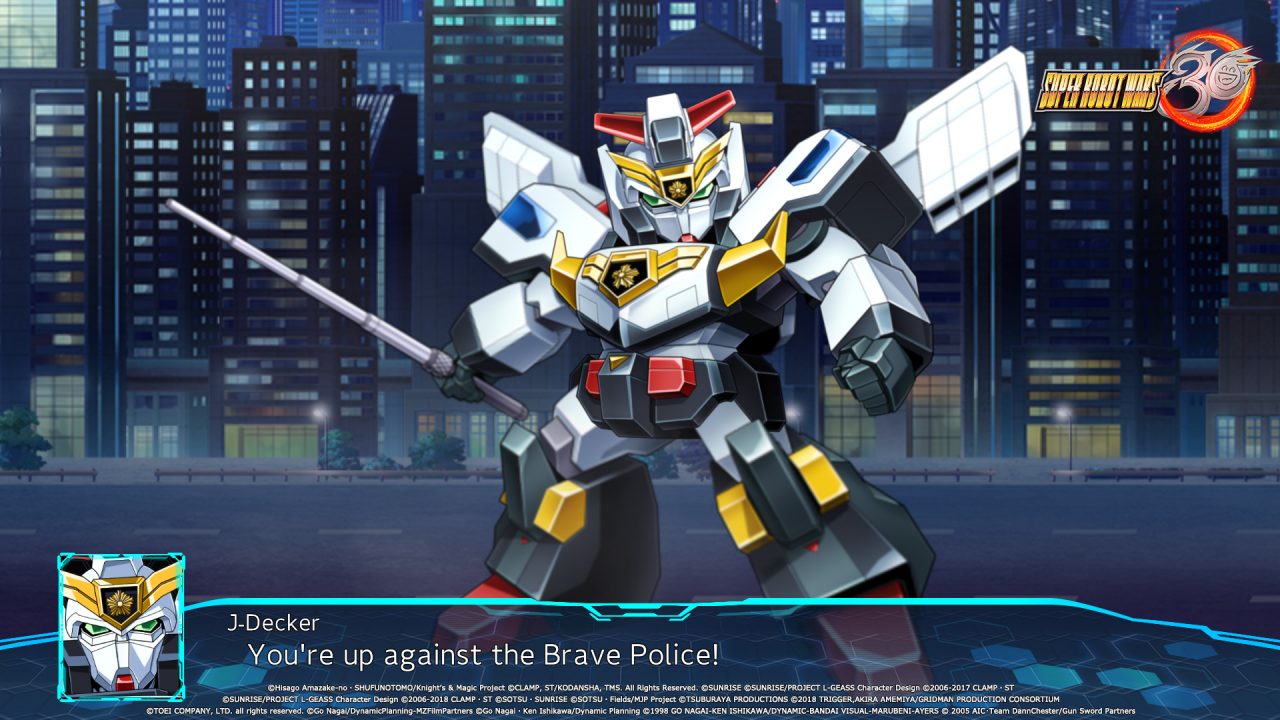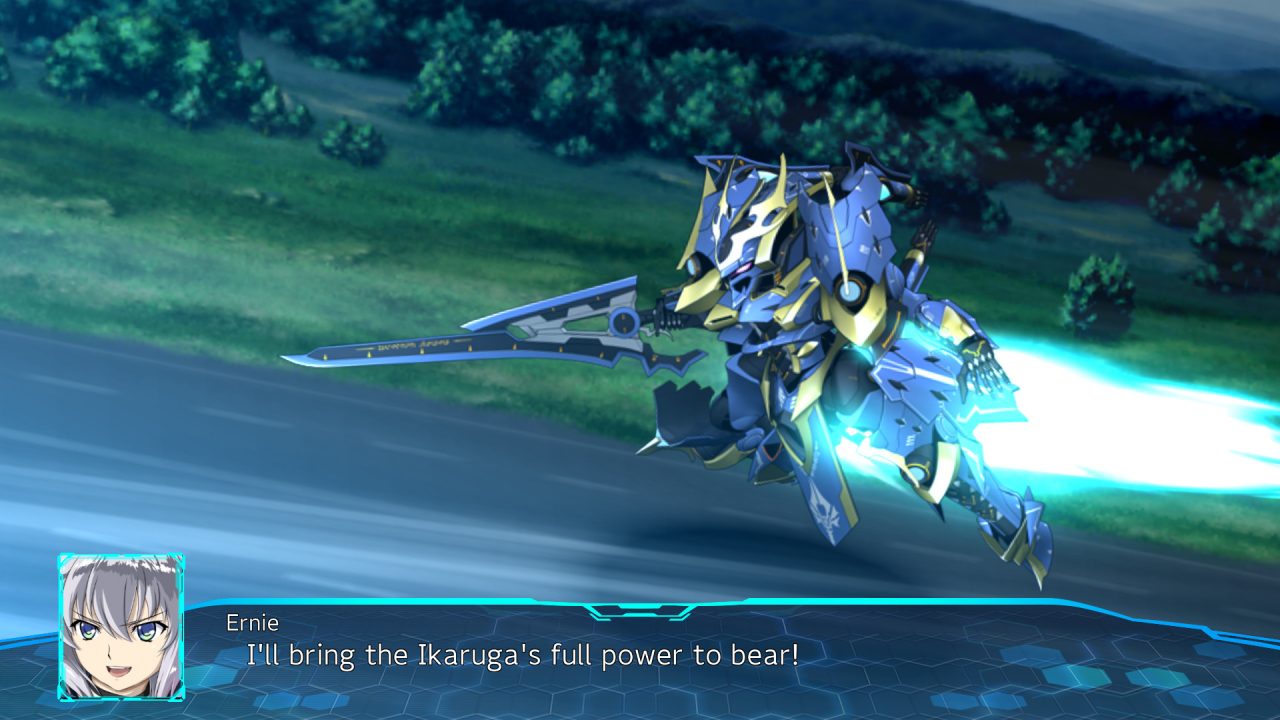Super Robot Wars 30 is the latest installment in the venerable crossover strategy RPG series Super Robot Wars. It’s no wonder it has enjoyed 30 years of immense popularity: who wouldn’t want to play a game where you get to recruit various giant robots from anime like Mobile Suit Victory Gundam, Mazinger Z, Majestic Prince, and many more for an epic multiverse crossover? Any Super Robot Wars aficionado will tell you that there is a certain magic to the series best understood by playing a mainline installment. Unfortunately, prior mainline installments were Japan-only, and the only Super Robot Wars games to make it to the US were a few spinoffs. That didn’t stop importers, though, as Super Robot Wars has been immensely popular among that demographic for decades. Super Robot Wars 30 is the first mainline game to make it to the US, and that is a big deal.
One aspect that makes the Super Robot Wars games more compelling than other crossovers is the engaging and surprisingly cohesive storylines that go above and beyond the mishmash found in most other crossover games. Super Robot Wars 30 is no exception, and the storyline I followed wove a sweeping, slow-burning, character-driven yarn that encouraged me to really take my time and experience it to the fullest. The localization is pretty good, especially considering the copious amounts of informative text in the menus and extensive dialogue for the plethora of well-known anime characters whom fans expect to speak and act a certain way. Some characters are worth recruiting for their banter and one-liners alone. Yes, the text contains some stray errors and instances where conversations read more like expository info dumps, but that’s mostly nitpicking on my part.

Although this title’s narrative references a lot of anime and even prior Super Robot Wars games, a neophyte can still get into it provided they’re into giant robots and willing to invest in reading all the lore in the menus. I spent copious amounts of time between battles fully immersing myself in Super Robot Wars‘ massive multiverse mythos. I didn’t just immerse myself through reading information; I also had fun listening to music in the jukebox, looking at art in the gallery, and all that good stuff. I now aim to check out several anime series I was unfamiliar with thanks to this game.
Super Robot Wars 30 throws in a lot of lore and history along with some choppy event scripting, but that also served as a subversive way for me to adopt the mindset of a protagonist thrown into a chaotic situation with nary a foothold. Players can choose between a male or female protagonist, both of whom have distinct personalities. Edge, the male protagonist, is quite the rogue whereas Az, the female protagonist, is far more aloof. Along with choosing a protagonist, players also choose from one of two inaugural missions. This selection determines whether players embark on the “Earth” or “Space” journeys. As the game progresses, a larger roster of missions opens up along with more pathway options. Chosen missions include combat and non-combat scenarios that offer additional story content and/or tangible rewards like money, items, or even new recruits.

As with other games in the series, Super Robot Wars 30 has multiple outcomes and offers immense replay value thanks to a plethora of appealing side missions. The base game has numerous side missions, and even more terrific missions are available as DLC. Even after spending over 60 hours as Az in the Space story, I immediately started a new Earth story game as Edge to see where that journey would take me. Heck, I even want to try the Edge/Space and Az/Earth combinations to see how various cutscenes would play out. The game has a New Game + mode where, depending on how my prior playthrough went, I got a bunch of points I could redeem for carry-over rewards. In short, Super Robot Wars 30 is the kind of game where the more you put into it, the more you get out of it.
There is no denying that Super Robot Wars 30 is a fine-looking game. The animated CG/anime blend cutscenes look sharp, the visual novel style story scenes between battles look smooth, and the flashy battle animations look spectacular. The battle animations can be fast-forwarded or turned off to speed up play progression but are worth watching every so often to see various robots fighting in all their metallic glory. The 2D battlefield scenes look like a high-definition version of a 16-bit RPG, which works but doesn’t impress the way the other graphics do. The battlefields are large and the chibi sprites inhabiting them aren’t as detailed or flashy as the other graphics. That said, the visuals and camera panning enable unencumbered views of the battlefield, which is always a plus when maneuvering troops.
Speaking of battle animations, theme music from particular shows will play during battles depending on which character is fighting. It was impossible for me not to grin like a blithering idiot at those killer anime theme songs when their respective characters took the spotlight. Edge and Az each get themes too and, while both are good, I preferred Az’s. The rest of the in-game music is terrific as well. The licensed pieces are obviously the great stuff you’d recognize from anime you’ve watched, but the original music is fantastic as well and enhances the already enjoyable battles and cutscenes.

Newcomers, veterans, and everyone between can all enjoy the game thanks to its four difficulty levels: beginner, normal, hard, and expert. If you have played a tactical RPG like Fire Emblem or Disgaea, it shouldn’t be difficult to get into Super Robot Wars. Players new to Super Robot Wars might be a little overwhelmed by all the mechanics this game throws at you immediately, but this is somewhat intentional. Much like the story’s pacing, the gameplay throwing a lot at you doubles down on subversively putting you in the mindset of a protagonist out of their depth. Once I embraced the chaos and let myself be a passenger on this ride, I thoroughly enjoyed myself. The biggest thing to note is that area attacks don’t discern ally from foe, so keep your troops out of harm’s way when initiating those.
Numerous menus contain impressive amounts of information. The interface looks sleek and does its best to be as streamlined as possible, but it’s nigh impossible to escape some clutter with so much to organize. To paraphrase the ongoing theme in this review, the menus were overwhelming at first, but as I took the time to explore them, I came to appreciate being able to access all that information. My gripe is that I could not manually sort my party members in the main menus. I had to choose from a limited set of sort options, and the option to highlight my preferred characters was never made clear; I discovered it quite by accident.

Super Robot Wars 30 has some other imperfections too. During battles, I found it unintuitive to move my cursor to an empty square and press a button to access the system menu for simple tasks like ending my turn phase. I’m used to games where such menus are more easily accessible and where a “Would you like to end your turn/phase?” pop-up screen would automatically appear. A brief and non-invasive tutorial does mention pressing the action button on an empty square to get the system menu, but it was easy to miss that piece of information. I’ll admit, I sometimes skip or glaze over tutorials since I’ve played so many RPGs, but after struggling to simply end my turn, I learned my lesson not to skip them here.
Whether you prefer to control the game using a gamepad or a keyboard + mouse combo, the control schemes could be better. I prefer playing games like this with a gamepad and disliked that there was only one control scheme. The gamepad button mapping was not as intuitive as I would have liked and took time to get used to. Keyboard + mouse users can enjoy extensive options to remap commands for the keyboard keys (which was great since its default scheme was not to my liking), yet there was no option at all to remap the gamepad buttons, which I found a grave oversight.
Before I end this review, I should probably mention that Super Robot Wars 30 was my first Super Robot Wars experience. I loved every second I spent with this game and am grateful that the opportunity to play it presented itself. Whenever I was at work, all I could think about was coming home to play it. I even contemplated burning a sick day or two so I could stay home and play it all day. Despite its flaws, Super Robot Wars 30 most certainly cast the spell on me that it’s been casting on fans for the past 30 years, and I look forward to 30 more.


